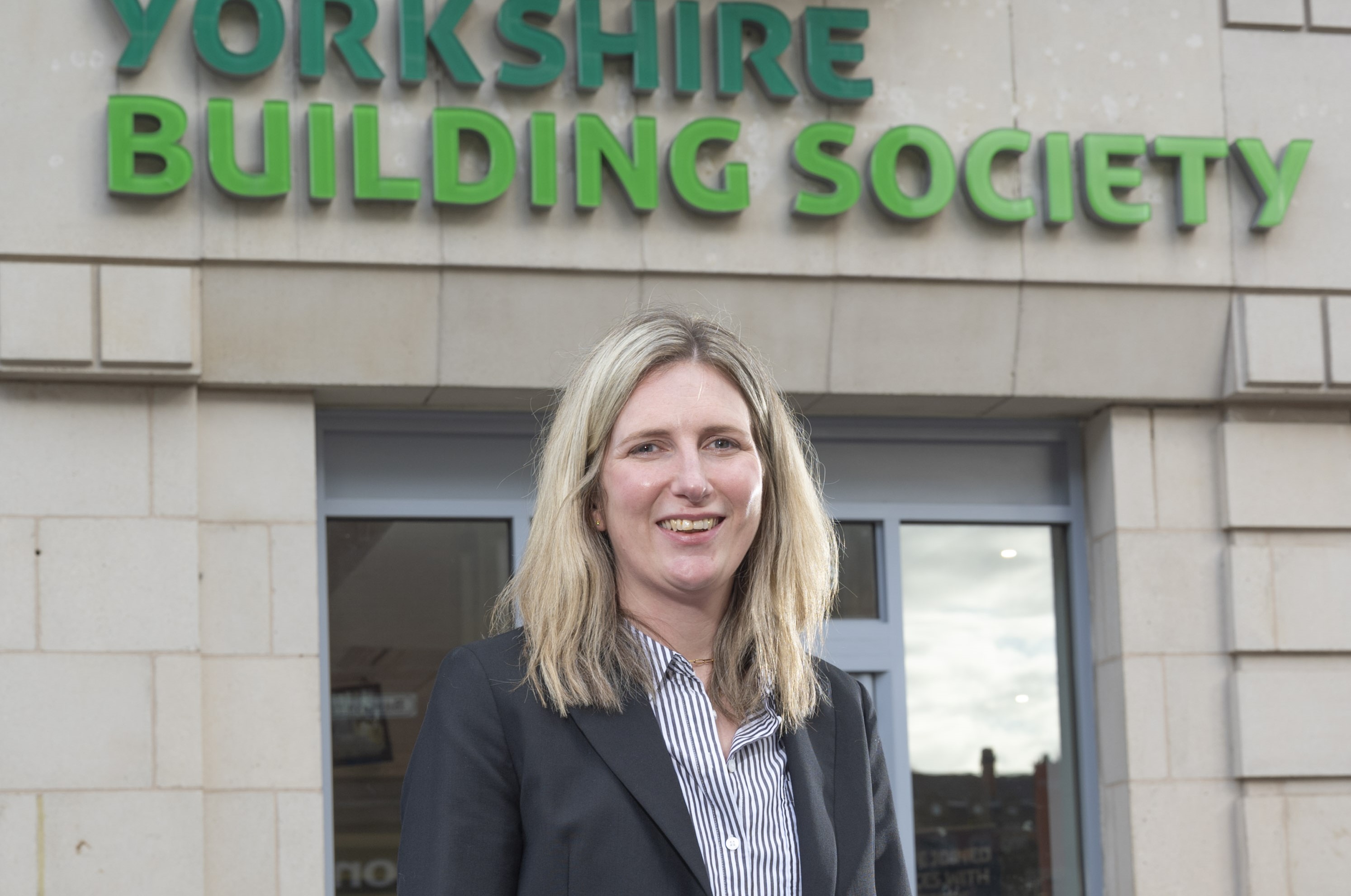Yorkshire Building Society today announces its half-year results for 2022, detailing its financial performance and support for borrowers and savers.
Financial highlights:
- Provided 25,000 new residential mortgages [i] (30 June 2021: 27,000)
- Mortgage balances increased to £43.3bn (31 December 2021: £41.9bn), the highest in our history.
- Paid 0.38% above the market average to savers which delivered an additional £44m of interest to them[ii]
- Saving balances increased to a record £37.7bn (31 December: 2021: £35.5bn).
- Core operating profit of £192.5m (30 June 2021: £134.9m).
- Statutory Profit Before Tax of £243.4m[iii] (30 June 2021: £147.7m).
- Common Equity Tier 1 ratio of 16.6% (31 December 2021: 16.8%).
The full financial results are included in the appendix below.
Alasdair Lenman, Interim Chief Executive of Yorkshire Building Society, said:
The Yorkshire Building Society delivered a balanced and positive set of results in the first half of 2022. Our simple and resilient business model has continued to perform well, even though volatility in the external environment remains elevated, with a significant increase in inflation, rising interest rates and the conflict in Ukraine.
Good levels of profitability have enabled us to further increase our average savings differential to the market, from 0.32% in 2021 to 0.38% in the first half of 2022 whilst still generating the capital we need to support strong net lending of £2.1bn and accelerating our investment in our digital transformation programme. Our strong net lending has been matched by our savings book growth and we have seen further reductions in the arrears rates on our lending. As a result, our key capital and liquidity ratios have remained stable and we are well positioned to manage the wider economic risks from inflation and falling GDP growth that lie ahead.
Helping our customers and members – Real Help with Real Lives - is our enduring purpose and we remain committed to helping people to have a place to call home, supporting people toward greater financial wellbeing and delivering value to our members over the long term. Our strategy of pursuing our purpose through the digital transformation of the Society, continuing to simplify our core business and extending the reach of our range of mortgage propositions continues to be both relevant and successful.
I’m particularly pleased with our support for first-time buyers and the investment we have made to improve our speed-to-market which in turn allows us to respond more rapidly to changing market conditions. The rapidly changing market and the success of our savings propositions have led to some significant spikes in demand which have meant that some of our service levels and our colleagues have been under pressure during the first half of 2022. Our strategy will enable us to continue to invest in improving our processes and customer experience which will benefit both members and colleagues.
The Bank of England increased Bank Rate to 0.25% in December last year and since then, it has been further increased to 1.25%. Supporting savers remains a key commitment of Yorkshire Building Society as well as delivering value to members. That’s why we further increased our savings rates above the rest of the market average and rewarded our loyal members.
Our ability to deliver on our purpose relies fundamentally on the hard work, commitment and resilience of our colleagues. They have continued to support our customers and each other through every challenge that has been thrown at them and I am very thankful to all of them and proud of what they have achieved.
Mortgages
The mortgage market remained strong throughout the first half of 2022, even after the Stamp Duty holiday ended in September the previous year, and mortgage rates increased following multiple rises in the Bank Rate.
The Society provided a total of £5.3bn in new mortgage lending in the first six months (30 June 2021: £5.9bn), as part of its purpose of helping people have a place to call home, and its approach to developing products and criteria were well-received by brokers and borrowers alike.
Supporting first-time buyers, who are less well served by the wider market and typically have a smaller deposit than other borrowers, remains a key priority and the Society has further developed its mortgage offering to help more borrowers with a wider range of credit scores.
As a result, total mortgage balances increased to £43.3bn which is the highest in its history.
Savings
A key element of the Society’s purpose is to deliver long-term value to members which in turn supports their financial resilience.
Yorkshire Building Society increased the current minimum rate on all its unrestricted access accounts to 1% and all restricted access accounts to 1.15%. The Society also continued to deliver its member loyalty programme and further developed its online savings offering, which both proved very popular. All this enabled the mutual to increase retail savings balances by over £2.0bn.
In the first half of this year the Society paid 0.38%[ii] above the rest of the market average, which means savers have benefited from an additional £44m of interest in total and savings balances have now reached an all-time high of £37.7bn.
Community investment
The Society remains committed to supporting those people across all ages hardest hit by the rising cost of living and is investing more than £1.8m over two years (2021/22) as part of its community agenda.
Through its partnership Age UK, the mutual aims to raise £1 million to deliver the Building Better Lives programme which provides intensive one-to-one support sessions and tailored expert advice to older people experiencing a significant life event. As a result, older people are equipped with the skills they need to cope financially, both now and in the future. So far, Age UK has helped more than 2,630 older people and unlocked over £4.3m worth of benefits since the programme started last year.
To further support both members and non-members, the Society expanded its award-winning partnership with Citizens Advice to provide free and confidential access to expert advisers within 18 of our branches. This service has now been delivered to over 1,000 appointments and unlocked an estimated £600,000 in additional income for those people who need it most.
To support young people, the Society continues to invest in its flagship financial education programme, Money Minds, and has expanded its reach significantly through digital resources to reach young people aged 11-19.
Outlook
The economy continued to be dominated by rising inflation, which is currently well above the Bank of England’s target of 2%, which shows little sign of abating.
While the rising interest rate environment is good news for savers, borrowers will start to feel the impact of increased mortgage payments as they come to the end of their current deals.
However, intense competition in the mortgage market looks set to continue and this may soften the increased cost of borrowing in the near term.
The Society will continue to invest in its digital servicing capability to help more members interact with the Society how, when and where they want to, and this will complement its branch and telephone channels.
Yorkshire Building Society’s mutual business model and clear strategy will continue to provide real and meaningful benefits to our members, customers, and communities for years to come and is very well placed to respond to any emerging threats from the external environment.
Financial results
Group Income Statement | ||||||
| 6 months to 30 June 2022 | 6 months to 30 June 2021 | Year to 31 December 2021 | |||
| £m | £m | £m | |||
Net interest income | 334.2 | 256.0 | 537.4 | |||
Fair value gains (losses) | 50.2 | 11.4 | 26.7 | |||
Net realised gains (losses) | 2.4 | 0.4 | 0.8 | |||
Other income | 3.6 | 6.7 | 12.7 | |||
| ||||||
Total income | 390.4 | 274.5 | 577.6 | |||
Management expenses | (143.6) | (132.6) | (274.5) | |||
| ||||||
Operating profit before provisions | 246.8 | 141.9 | 303.1 | |||
Impairment of loans and advances to customers | (0.7) | 6.0 | 19.2 | |||
Movement in provisions | (2.7) | (0.2) | (2.3) | |||
| ||||||
Profit before tax | 243.4 | 147.7 | 320.0 | |||
Tax expense | (57.2) | (26.5) | (62.9) | |||
| ||||||
Net profit | 186.2 | 121.2 | 257.1 | |||
Statement of Comprehensive Income | ||||||
| 6 months to 30 June 2022 | 6 months to 30 June 2021 | Year to 31 December 2021 | |||
| £m | £m | £m | |||
Net profit | 186.2 | 121.2 | 257.1 | |||
Items that will subsequently be reclassified to profit and loss: | ||||||
| ||||||
Cash flow hedges | ||||||
Fair value movements taken to equity | 18.6 | - | 15.3 | |||
Amounts transferred to income statement | (3.9) | 0.2 | 0.4 | |||
Tax on amounts recognised in equity | (4.2) | (0.1) | (4.2) | |||
Effect of change in corporation tax rate | 0.8 | - | (0.9) | |||
Financial assets measured through other comprehensive income: | ||||||
Fair value movements taken to equity | (3.3) | 3.6 | 18.3 | |||
Amounts transferred to income statement | 0.8 | (0.8) | (3.7) | |||
Tax on amounts recognised in equity | 0.6 | (0.9) | (4.0) | |||
Effect of change in corporation tax rate | 1.6 | (1.1) | (1.9) | |||
| ||||||
Items that will not subsequently be reclassified to profit and loss: | ||||||
Remeasurement of net retirement benefit obligations | (30.5) | 4.7 | 30.5 | |||
Tax on remeasurement of retirement benefit obligations | 8.4 | (1.0) | (8.0) | |||
Effect of change in corporation tax rate | 6.0 | (5.5) | (7.2) | |||
| ||||||
Total comprehensive income for the period | 181.1 | 120.3 | 291.7 | |||
Reconciliation of Core Operating Profit | ||||||
| 6 months to 30 June 2022 | 6 months to 30 June 2021 | Year to 31 December 2021 | |||
| £m | £m | £m | |||
Statutory profit before tax | 243.4 | 147.7 | 320.0 | |||
Reverse out the following items: | ||||||
Movement in restructuring provision | 0.2 | 0.6 | 2.1 | |||
Fair value gains and losses | (49.8) | (11.4) | (19.1) | |||
Historic fair value credit adjustments on acquired loans | (1.3) | (1.9) | (3.2) | |||
Other non-core items | - | (0.1) | (2.5) | |||
| ||||||
Core operating profit | 192.5 | 134.9 | 297.3 | |||
Group Statement of Financial Position | ||||||
| 30 June 2022 | 30 June 2021 | 31 December 2021 | |||
| £bn | £bn | £bn | |||
Liquid assets | 11.4 | 7.7 | 10.0 | |||
Loans and advances to customers | 43.3 | 41.0 | 41.9 | |||
Other assets | 1.7 | 0.7 | 0.8 | |||
| ||||||
Total assets | 56.4 | 49.4 | 52.7 | |||
Shares - retail savings | 37.7 | 35.2 | 35.5 | |||
Wholesale funding and other deposits | 13.7 | 10.2 | 12.9 | |||
Subordinated liabilities | 1.1 | 0.6 | 0.9 | |||
Other liabilities | 0.6 | 0.5 | 0.3 | |||
| ||||||
Total Liabilities | 53.1 | 46.5 | 49.6 | |||
| ||||||
Members' interest and equity | 3.3 | 2.9 | 3.1 | |||
| ||||||
Total members' interest, equity and liabilities | 56.4 | 49.4 | 52.7 | |||
Key ratios | ||||||
| 30 June 2022 | 30 June 2021 | 31 December 2021 | |||
| % | % | % | |||
Net Interest Margin | 1.22% | 1.05% | 1.07% | |||
Management expense ratio | 0.53% | 0.55% | 0.55% | |||
Asset growth | 7.0% | 3.1% | 10.0% | |||
Loans and advances growth | 3.3% | 5.7% | 8.1% | |||
Member balance growth | 6.3% | 5.5% | 6.4% | |||
Liquidity ratio | 22.1% | 17.1% | 20.7% | |||
Total capital ratio | 18.3% | 18.7% | 18.7% | |||
Common Equity/Core Tier 1 ratio | 16.6% | 16.6% | 16.8% | |||
MREL leverage Ratio | 7.9% | 7.1% | 7.6% | |||
Leverage Ratio (UK) | 5.8% | 5.7% | 5.9% | |||
Cost: core income ratio | 42.3.% | 50.4% | 49.8% | |||
[i] The number of new residential mortgage advances in the period, helping our customers to have a place to call home.
[ii] YBS Group average savings rate compared to rest of market average rates. Data source: CACI’s Current Account and Savings Database (CSDB), Stock. Data period January – Apr 2022 (latest data available)
[iii] The main difference between statutory profit before tax and core operating profit is a recorded fair value gain of £49.8 million in the six months to 30 June 2022 (2021 H1: £11.4 million gain), mainly as a consequence of the external interest rate environment and the effect this has on mortgage pipeline interest rate swaps.



